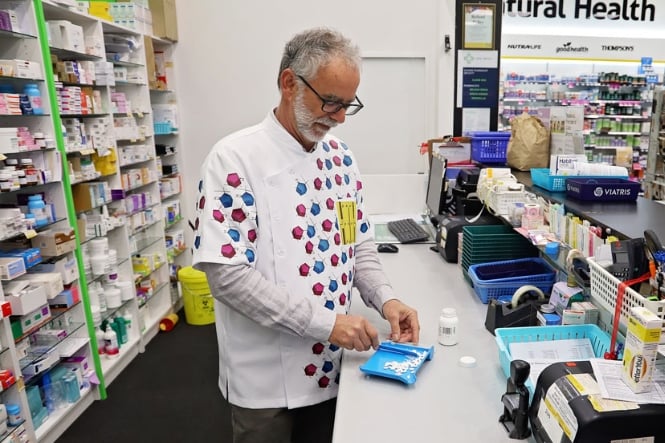Are you an NZ-based healthcare provider? Did you know we have a whole section on Healthify just for you, to assist in improving healthcare planning, delivery and outcomes?
Olsalazine
Sounds like 'ohl-SAL-uh-zeen'
Key points about olsalazine
- Olsalazine is used to treat ulcerative colitis.
- Olsalazine is also called Dipentum.
- It belongs to a group of medicines called aminosalicylates.
- Find out how to take it safely and the possible side effects.

Olsalazine is used to treat ulcerative colitis. It works by reducing inflammation in the gut and may lessen symptoms of pain and diarrhoea (runny poo). It allows the damaged gut to heal and helps to prevent symptoms from flaring up again. Read more about ulcerative colitis.
Supply issue for olsalazine 250 mg capsule and 500mg tablet (Dipentum) |
| From February 2021 the Dipentum brand of olsalazine 250 mg capsules and 500 mg tablets will be out of stock long-term. An alternative olsalazine 500 mg tablet (Atnahs) is available. Learn more about the olsalazine supply issue.(external link) |
In Aotearoa New Zealand olsalazine comes as tablets (500mg).
- Your doctor will start you on a low dose and increase it over a few days to make sure that you're taking a dose that best controls your symptoms. Your dose may be reduced again once your symptoms have improved.
- The usual dose of olsalazine is 500mg twice a day after meals.
- Always take olsalazine exactly as your doctor has told you. The pharmacy label on your medicine will tell you how much olsalazine to take, how often to take it and any special instructions.
- Take olsalazine tablets with a glass of water. Take your dose with or soon after food to reduce side-effects, such as diarrhoea (runny poo) and stomach upset.
- Take your olsalazine dose at the same times each day, usually in the morning and the evening.
- If you forget to take your dose, take it as soon as you remember that day. But if it is nearly time for your next dose, just take the next dose at the right time. Don't take double the dose.
- Olsalazine will start working straight away but it may take a week or so for your symptoms to improve.
Here are some things to know when you're taking olsalazine. Other things may be important as well, so ask your healthcare provider what you should know about.
You'll need regular blood tests while taking olsalazine to make sure it's not causing problems with your liver, kidneys or blood.
Olsalazine may interact with other medicines. Tell your doctor or pharmacist about all medicines you are taking including over-the-counter medicines, herbal and complementary medicines and recreational drugs.
Let your doctor know if you are pregnant or breastfeeding.
Like all medicines, olsalazine can cause side effects, but not everyone gets them. Often side effects improve as your body gets used to the new medicine.
| Side effects | What should I do? |
|---|---|
|
|
|
|
|
|
|
|
|
|
| For more information on side effects, see the Medsafe consumer information leaflet Dipentum(external link). | |
Read more about medicines and side effects and reporting a reaction you think might be a side effect.
The following links have more information on olsalazine.
Olsalazine (external link)NZ Formulary
Dipentum(external link) Medsafe Consumer Information Sheet (NZ)
Brochures
Medicines and side effects(external link) Healthify He Puna Waiora, NZ, 2024
Supply issue(external link) Pharmac, NZ, 2025
5 questions to ask about your medications(external link) Health Quality and Safety Commission, NZ, 2019 English(external link), te reo Māori(external link)
References
- Olsalazine sodium(external link) NZ Formulary
- Dipentum®(external link) Medsafe, NZ
Brochures

Medicines and side effects
Healthify He Puna Waiora, NZ, 2024

Supply issue
Pharmac, NZ, 2025

Health Quality and Safety Commission, NZ, 2019 English, te reo Māori
Credits: Sandra Ponen, Pharmacist, Healthify He Puna Waiora. Healthify is brought to you by Health Navigator Charitable Trust.
Last reviewed:
Page last updated:





